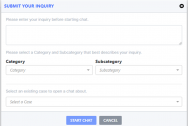Key Performance Indicators Enhance HR Help Desk Value
The benefits of implementing an HR Help Desk and Employee Self Service Knowledge Base solution are many, including fewer calls into HR, consistent adherence to corporate policies, greater employee satisfaction, and many more. However, a robust, well-designed and mature solution can provide even greater value through powerful analytics that use key performance indicators. Key performance indicators, or KPI’s, define factors HR needs to benchmark and monitor.
Traditional HR systems do not track patterns of employee morale issues, the impact of personnel disputes on overall performance, management style inconsistencies, and other, often subliminal, employee related problems that can negatively affect corporate productivity.
Often, in companies that have implemented formal processes to improve overall productivity and maximize efficiency, such as Lean manufacturing, Six Sigma programs, or Balanced Scorecard solutions, one critical missing piece of the analysis puzzle is quantification of the employee morale element. For instance, a Balanced Scorecard initiative creates a “balanced” relationship between key financial, customer, internal business process, and learning & growth metrics. “Customer” can and should refer to the external customer (the client) as well as the internal customer (the employee). Though Talent Management systems do a good job of managing the employee learning & growth metric (a key component of the Balanced Scorecard), they don’t measure critical intangibles such as general morale, engagement or employee satisfaction. Factors such as low morale and employee/management disputes will certainly influence overall performance, factors that come to light in HR Help Desk reporting and analytics.
Six Sigma initiatives are designed to minimize defects and waste, and improve overall efficiencies. The primary phases of a Six Sigma initiative include Define, Measure, Analyze, Design, and Verify. Success in each of these phases relies on the effectiveness of employees assigned to specific roles, particularly Six Sigma “Green Belts”, who are generally non-management workers with other job responsibilities in addition to their Six Sigma role. Underlying HR issues can and will negatively impact the project success, leaving executive stake holders to determine why the initiative ultimately may not have met expectations and where breakdowns in the process occurred.
One goal of the Japanese Kaizen process (used by Toyota and others) specifically strives to humanize the work environment while minimizing unusually hard tasks. Kaizen concepts have even been adopted by the famous self-help guru Anthony Robbins. It is easy to appreciate how HR Help Desk metrics perfectly fit into this philosophy of business improvement.
Each one of these initiatives, as well as others, depends on the achievement of optimal employee performance in order to succeed. Even organizations that have not defined formal key performance indicators can achieve tremendous benefits through a complete analysis of the workforce-as-a-body from an HR perspective. Comprehensive analytic components in solutions such as LBi HR Help Desk can fill the void in understanding the “pulse” of the overall employee population within the organization. Patterns of employee behavior, recurring HR issues, plus identifying where, when, and why negative issues are prominent, are just a few examples of the benefits of HR Help Desk analytics.
By delivering HR Help Desk key performance indicators in a graphical Executive Dashboard format, senior management will have the right information at their fingertips, in real time and with pain points clearly and visually presented, to make the critical decisions necessary to maximize organizational performance.
If you’d like to learn other ways an automated HR help desk can help HR up its game, see our white paper “Five Top HR Challenges and How an Automated HR Case Management Solution Can Beat Them.”
Related articles









